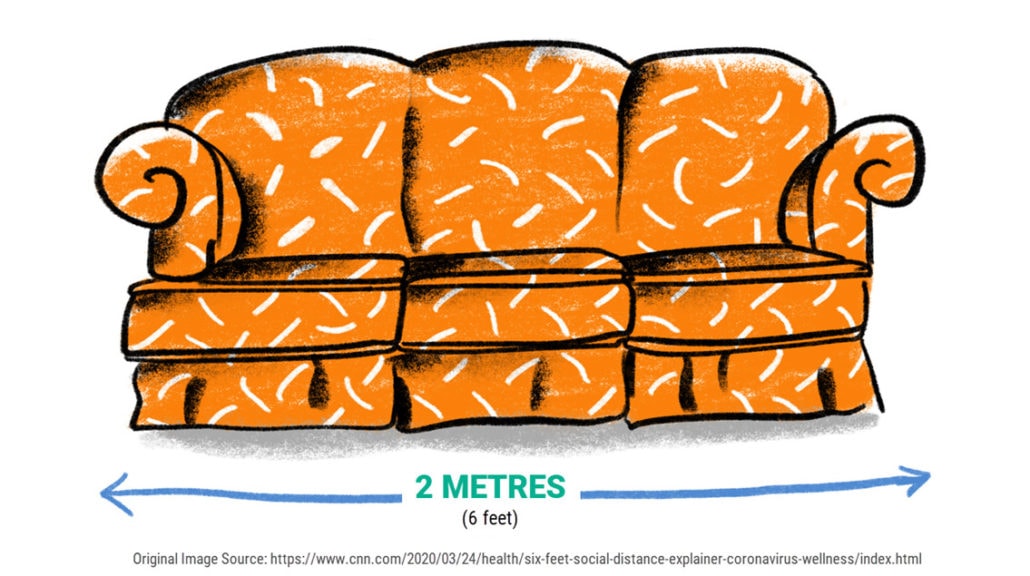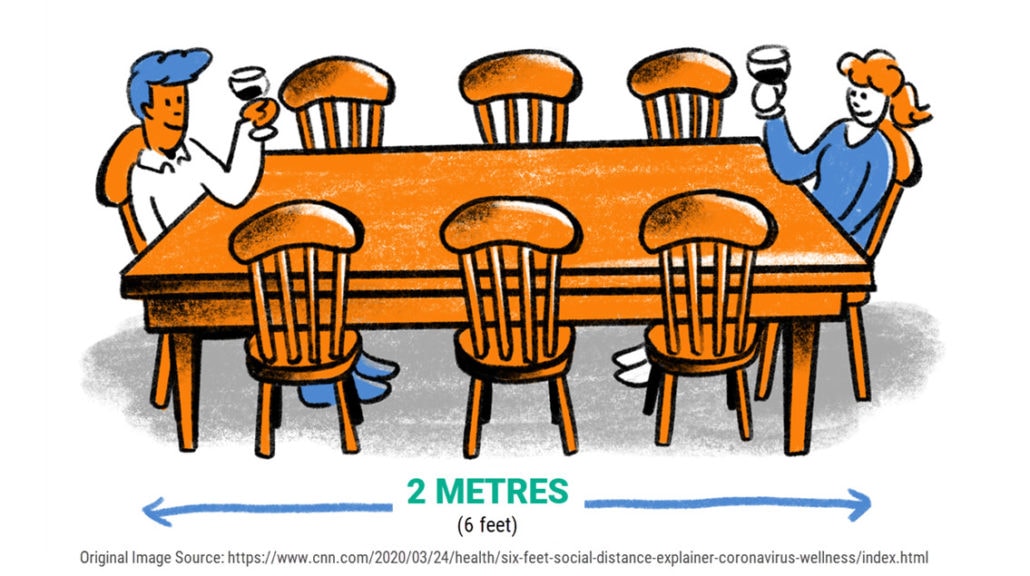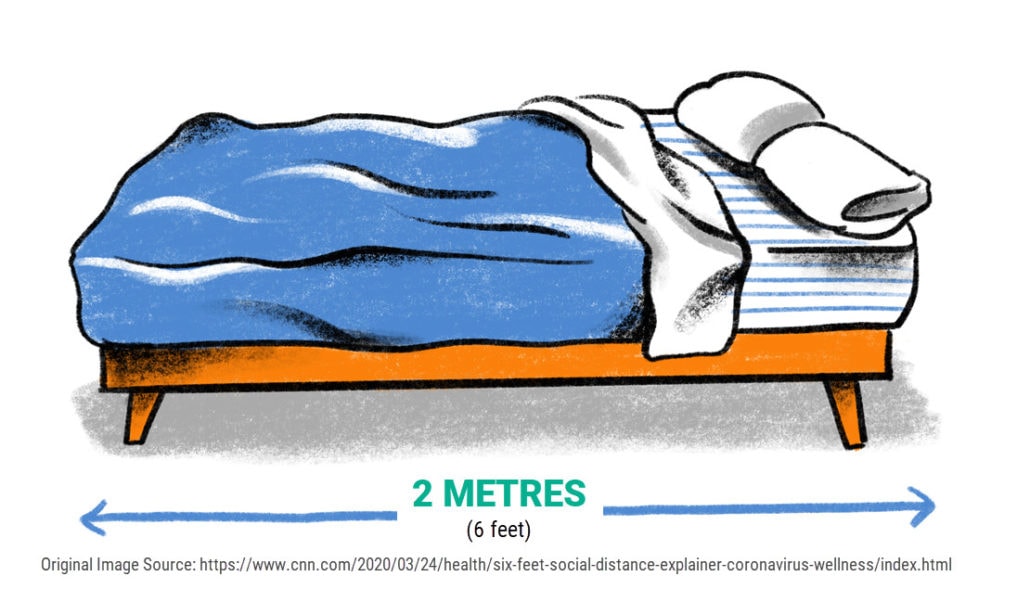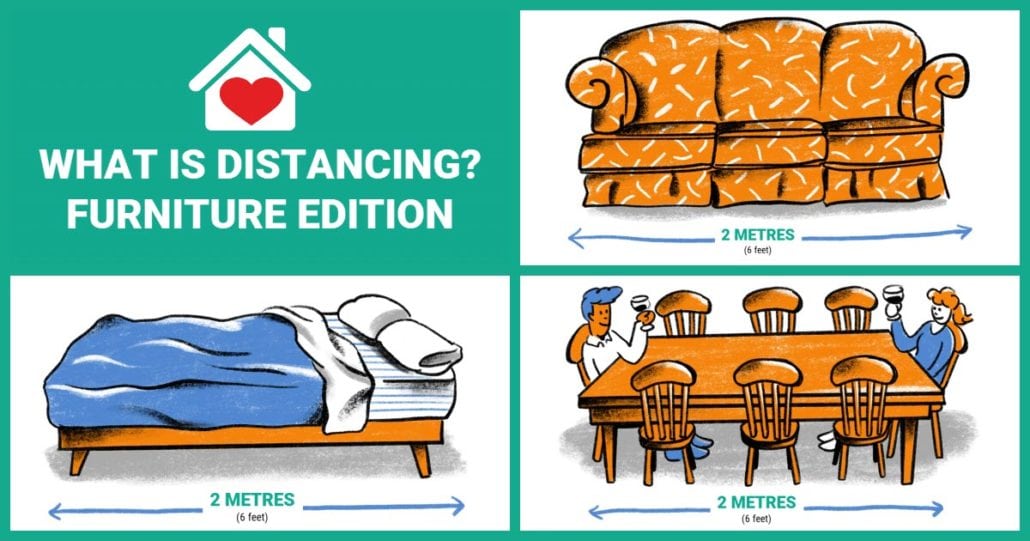We’ve all been advised to stand 2 metres apart from others to lower our risk of getting infected with the coronavirus. As CNN explains:
The “2 metre” rule comes from studies of respiratory physiology, said Dr. William Schaffner, infectious disease expert at Vanderbilt University. “Without a cough or a sneeze, if we exhale, the distance 3 to 6 feet from each other is called the breathing zone. And it’s in that kind of volume of air that what I exhale begins to mix with the air that’s already in the room,” Schaffner said. “So if you’re standing within 3 to 6 feet of me, you may well inhale some of what I exhale. And of course if I have the virus, what I’m exhaling microscopically contains the virus.”Vanderbuilt University
If the ‘distancing’ is going to become part of the new lexicon of terms we use everyday:
- We want to be very specific about what it means and doesn’t mean.
- We need to tell whether we’re standing just far away enough from people, or if we need to tell them to back up a little bit more?
- We need easy memorable ways to commit this thinking to memory.
The following is a summary primer on what we’ve found online about other experts definitions of ‘distancing’, then we provide a list common items of furniture you can keep in mind to help you judge the appropriate distance you should keep from other people.
Defining physical distancing:
World Health Organization
WHO describes distancing as maintaining at least 1 metre (3 feet) distance between yourself and anyone who is coughing or sneezing.
When someone coughs or sneezes they spray small liquid droplets from their nose or mouth which may contain virus. If you are too close, you can breathe in the droplets, including the COVID-19 virus if the person coughing has the disease.
Canada’s Public Health's recommendation
The Canadian Public Health site describes distancing as “proven to be one of the most effective ways to reduce the spread of illness during an outbreak.”
So since we all now need to learn the specific changes we have to now make in our everyday routines to minimize close contact with others, including:
- avoiding crowded places and non-essential gatherings
- avoiding common greetings, such as handshakes
- limiting contact with people at higher risk like older adults and those in poor health
- keeping a distance of at least 2 arms-length (approximately 2 metres) from others
The Ontario government’s recommendation
The Ontario definition is very general – “Everyone in Ontario should be practicing physical distancing to reduce their exposure to other people. Everyone in Ontario should do their best to avoid close contact with people outside of their immediate families. Close contact includes being within two (2) meters of another person.”
Toronto’s Public Health Recommendation
Our local city has merged a other prevention activities into distancing. They go on to say to prevent the spread of COVID-19 and protect our community, Toronto Public Health encourages everyone to stay home and reduce their physical contact with others. Physical distancing means limiting the number of people you come into close contact with.
Together, we can slow the spread of COVID-19 by making a conscious effort to keep a physical distance between each other. Social distancing is proven to be one of the most effective ways to reduce the spread of illness during an outbreak. With patience and cooperation, we can all do our part.
Your sofa
A standard three-seat sofa can be up to 2 metres (6 feet) long — which means that you and the person sitting on the other end of it probably aren’t far away enough from each other.

Your dining room table
Try imagining you and your friend sitting across from each other at a long, fancy dining table — some of them stretch 2 metres (6 feet) across.

The length of your mattress
The lengths of full- and twin-size beds are about 2 metres (6.2 feet) from top to bottom.

How long will we have to keep physical distancing?
Probably for several months. But you might have to do it “over and over again,” since the outbreak could come in waves.
Research by the Imperial College in Great Britain “would suggest you have to institute these kinds of measures for five months, very vigorously,” said Dr. Celine Gounder, an infectious disease specialist at Bellevue Hospital Center.
“And then you may be able to relax for a period. And then you would re-institute as the cases go up again. But we’re basically looking at doing this over and over and over again, even after a five-month period of strict social distancing, in order to curb cases until we have a vaccine.”
Health officials say we’re at least a year away from the first publicly available coronavirus vaccine. In the meantime, they say everyone should avoid large crowds and stay at least 6 feet away from others.
Here’s how you can practice distanced furniture donations:
- Organize your furniture donations to a single part of the home (ideally garage) as much as possible
- Visit Furniture Bank and ask for a quote to handle the transportation for you.
- Book the furniture removal service – 100% of those funds go to operating the charity operations.
- Do not touch the donation for 72 hours prior to pick up date to keep surfaces clean.
- Provide access to your donation area and move to a different room to monitor removal.
- Furniture Bank staff trained with distanced safety protocols will swiftly and safely remove furniture donation
- Furniture Bank will return donations for processing at the charity.
- Tax receipts will be issued within 48 hours by email.






